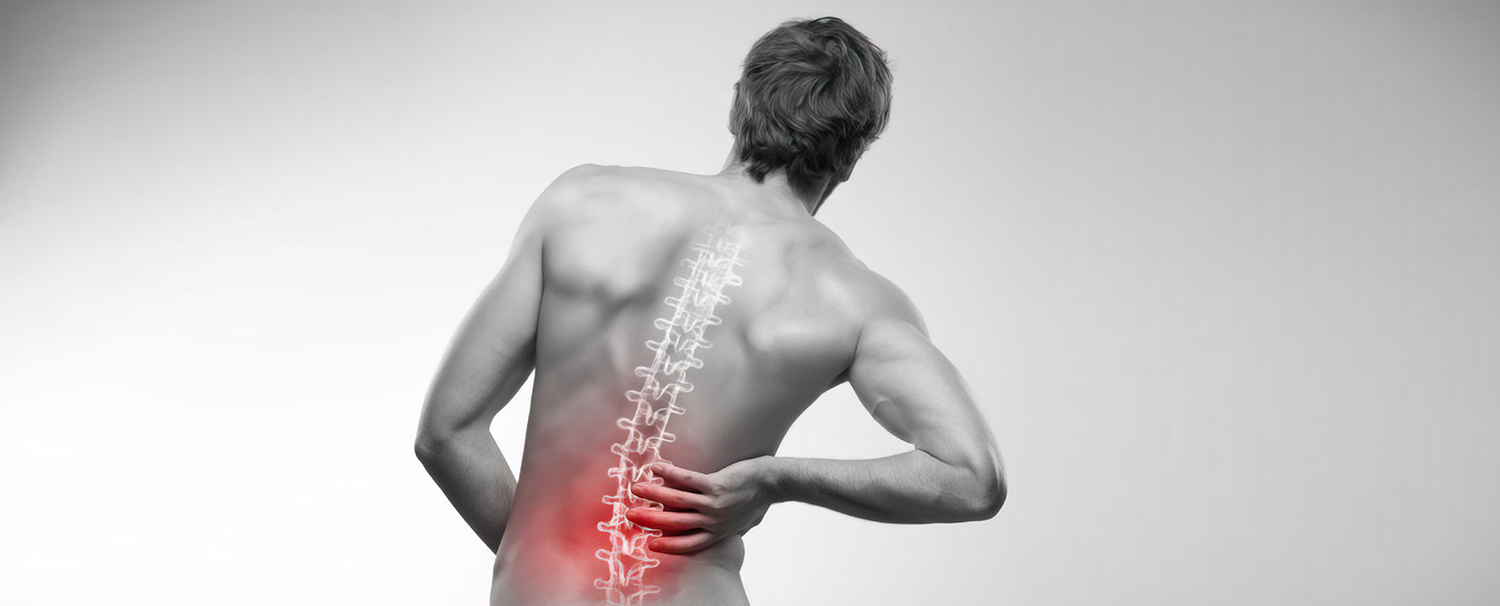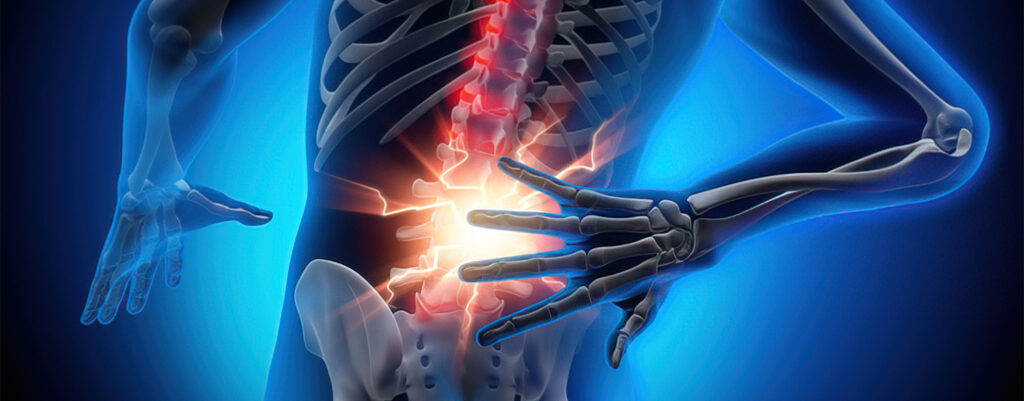BACK PAIN

What is Back Pain?
First of all, back pain is a symptom of an underlying condition or injury. Acute pain occurs when the nerve(s) in the spinal column become impinged or pinched. This is commonly caused by a disc or bone spur pushing into the canal. This canal houses the spinal cord, the cauda equina, and the nerve roots.
At birth, discs are comprised primarily of water. However, they tend to dry and shrink as we age. When this occurs, it causes changes in the spinal column. Further changes can also occur when a disc ruptures or herniates (protrudes.) Typically due to injury. Although, often in response to these changes, tissue around the spinal canal thickens. Reducing the space in the spinal canal. This narrowing is called stenosis. Additionally, when the facet joints degenerate, they become larger. Eventually forming spurs. And can pinch the nerve roots or even the spinal cord.
Common Back Pain Causes
Back pain that comes on abruptly can last up to six weeks. This is called acute pain. Often caused by a fall or lifting a heavy object. When pain persists for more than three months (chronic pain) is not as likely as acute pain.
Below, you will find a list of common causes:
Upper Back
Cervical Stenosis
Degenerative Disc
Facet Disease
Herniated Disc
Kyphosis
Pinched Nerve
Slipped Disc
Whiplash
Lower Back
Bulging Disc
Degenerative Disc
Facet Syndrome
Herniated Disc
Lumbar Stenosis
Pinched Nerve
Sciatica
Spondylolisthesis

Diagnosing the Pain
Our spine doctors will first examine your back and assess your discomfort level. Then your ability to sit, stand, walk and lift your legs. This information will help the specialist determine the origin of the back pain. Plus how it affects your everyday life. There are many different tests that can be done to provide imaging, including:
- X-rays
- MRI
- CT scan
- Blood tests
- Bone scan
- Nerve studies
X-rays show bone alignment, arthritis, or fractured bones. However, an MRI or CT scan reveals herniated disks, and problems with bones, tendons, muscles, nerves, and ligaments.

Back Pain Treatment

Common Back Pain Treatment
For acute back pain, your doctor may recommend over-the-counter pain relievers and the use of heat. If home treatments aren’t working after several weeks, stronger medications may be recommended. Such as:
- Muscle relaxants
- Anti-inflammatories
- Physical therapy
- Cortisone injections
If you are unable to function, or your neurological deficit is becoming progressively worse, then surgery may be recommended. In some cases, however, modern spinal surgery is extremely successful in alleviating pain and restoring mobility.
There are a number of different surgical approaches to relieving back pain though. The following is a general description of some of the most commonly performed procedures:
- Discectomy – The removal of all or part of the offending disc
- Decompression – The removal of bone spurs
- Corpectomy – The removal of a vertebra
- Spinal Fusion – The joining of discs to prevent motion in the affected area
